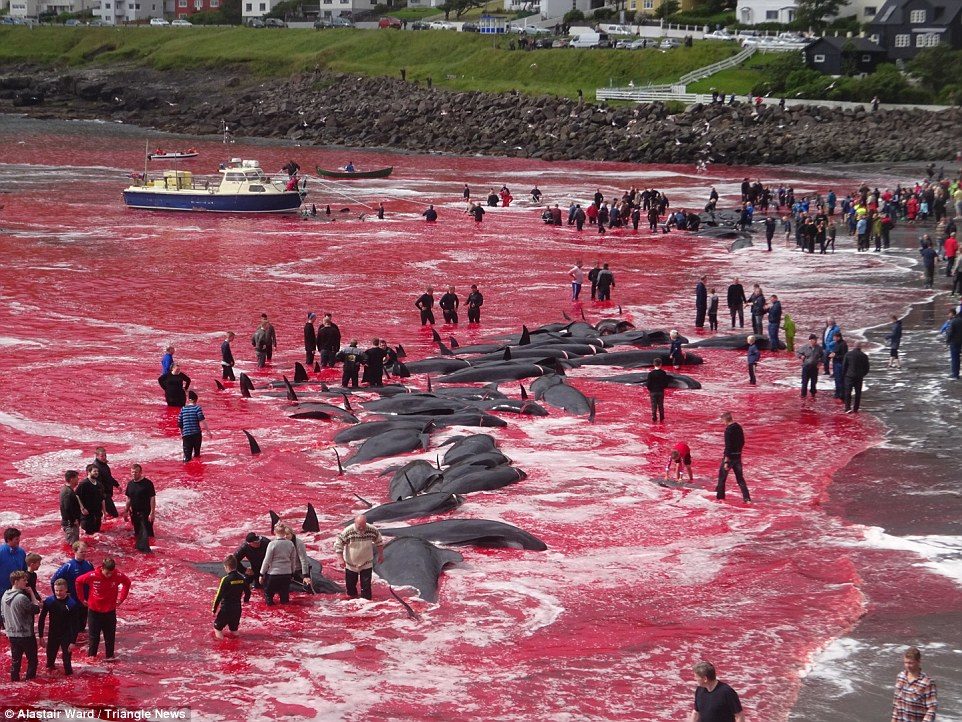
The practice, known as whale driving, saw children as young as five take part in the hunt of some 180 whales in the village of Sandavágur on Vágar island last month.
Every summer, hundreds of pilot and beaked whales are killed across the Faroe Islands, a Danish archipelago located hundreds of miles off the Scottish coast between Norway and Iceland.
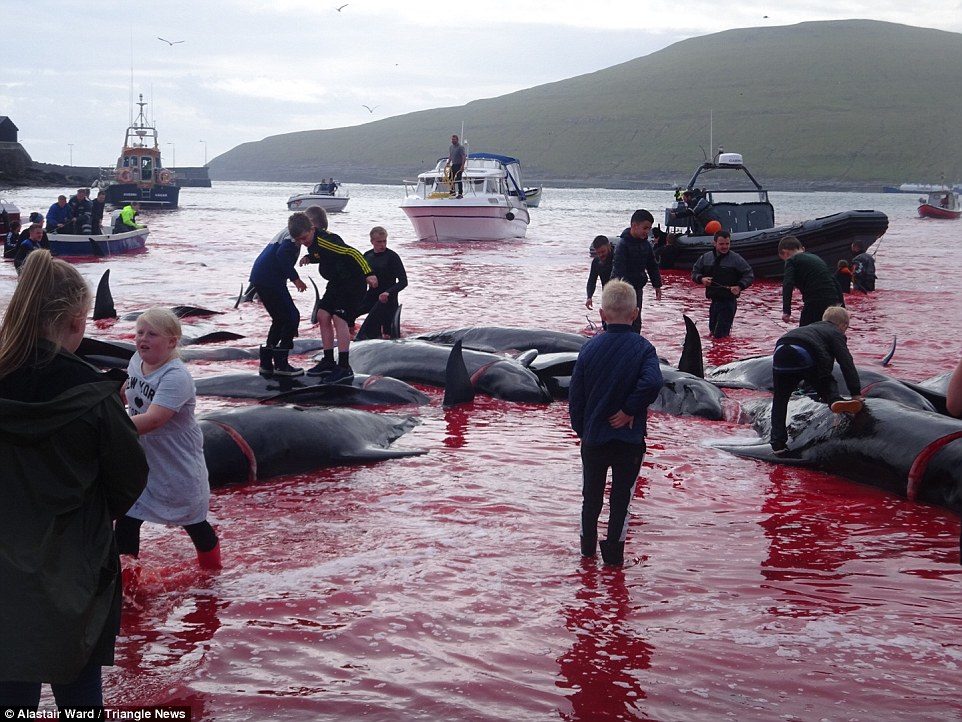
They are then killed using a 'spinal lance' that is inserted through the animal's neck to break its spinal cord.
While locals have been carrying out the annual hunts ahead of the sparse winter months for centuries, with the meat served salted or cut into steaks and the blubber sliced up and eaten raw, the practice often come off as shocking and gruesome to outsiders.
Cambridge University student Alastair Ward, 22, was visiting the archipelago last month to celebrate his graduation when he and a friend stumbled across the whale hunt.
He said: 'We were walking round this bay when this family of locals ran over and said 'you're lucky, there's a whale coming'.
'We thought it would just be one being dragged in but more and more boats kept appearing on the horizon.
'I couldn't believe how many whales there were. They were driving them into the bay, prodding them with their oars.
'Once they got close enough, the whole town sprinted in and started hacking at them. Even the children were getting involved, pulling on the ropes and jumping on the carcasses.
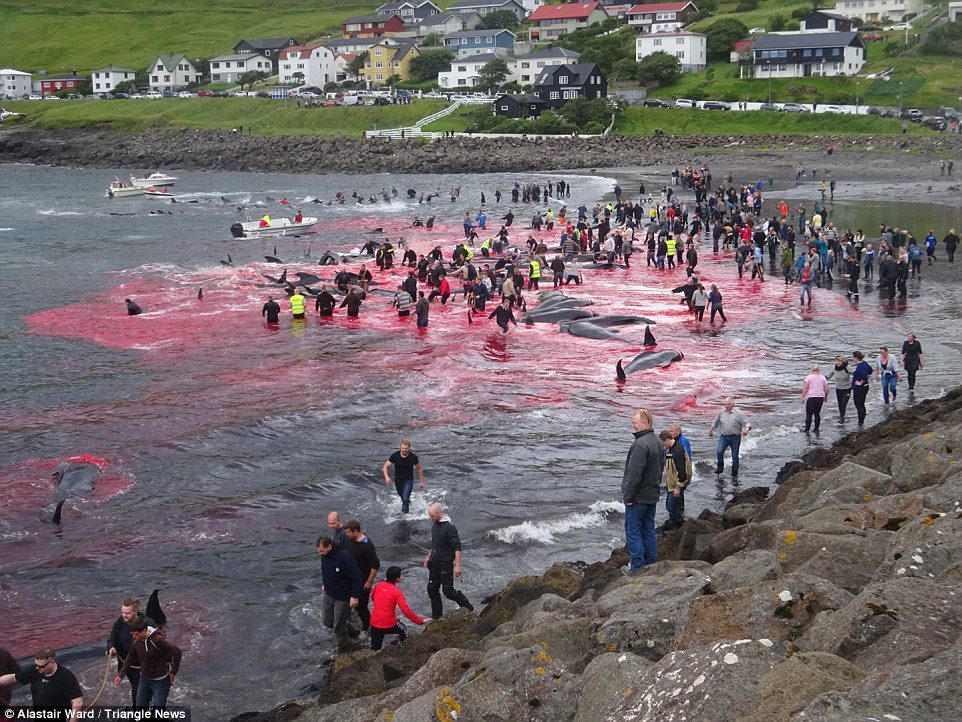
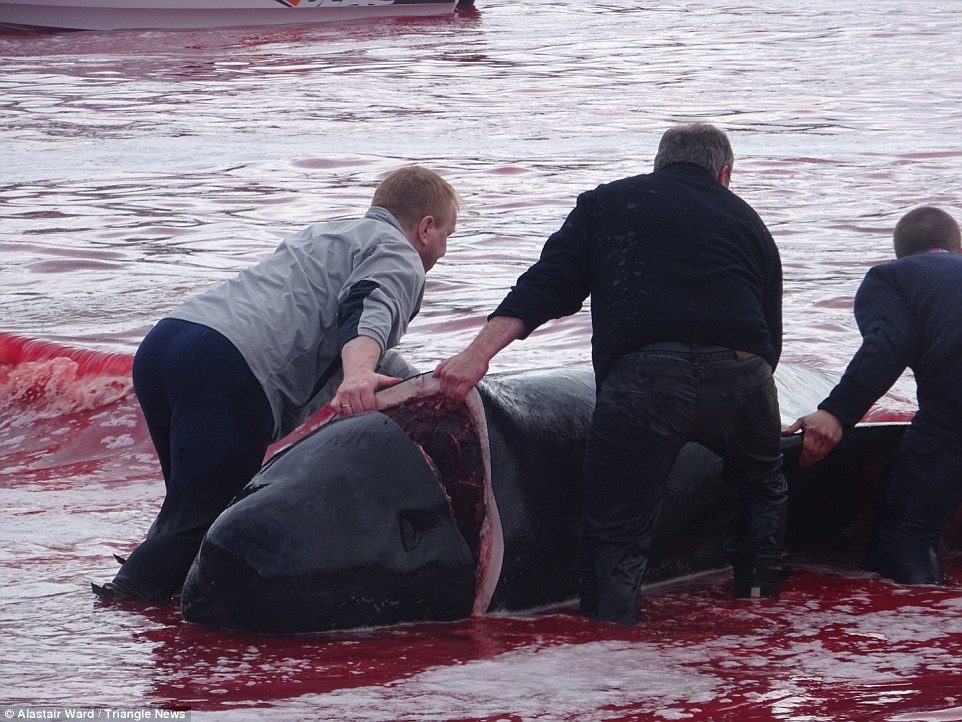
'They were putting hooks on ropes in their blowholes to pull them in and then hacking at them with knives. They didn't die in a very humane way.
'A lot of the locals were all saying how it's the same as farming but I couldn't really agree with that.
'Children were jumping on top of them. They just have such a different attitude to us because they're brought up on it.'
The hunt has been criticised by animal rights campaigners in the past, who say the ritual is cruel and unnecessary.
However, the local government says the hunting is not only sustainable, but ensures that the islands, which has a limited opportunities for farming, are as self-sufficient as possible.
Each whale provides several hundreds of kilos of meat and blubber, food which would otherwise have to be imported from abroad to the islands at a cost to the locals and the environment.
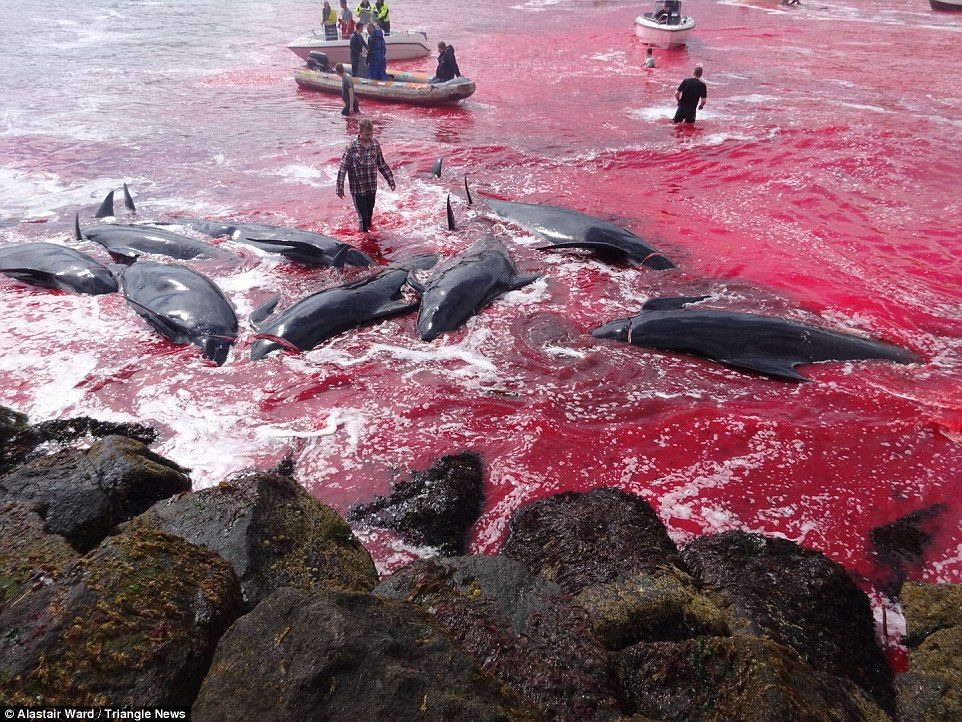



Reader Comments